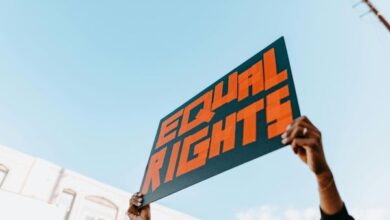Role of social media in public policy
Social media platforms are a powerful tool for govt to disseminate information & sway public opinion

 In recent times, social media has played a crucial role in all walks of life. In public policy, it has taken a new turn to reach out to people, people reaching out to governments, sharing views, developing transparency and bringing in a wee bit of trust. It often serves as a tool for better management of policy-making processes.
In recent times, social media has played a crucial role in all walks of life. In public policy, it has taken a new turn to reach out to people, people reaching out to governments, sharing views, developing transparency and bringing in a wee bit of trust. It often serves as a tool for better management of policy-making processes.
In recent trends, policymakers have adopted social media platforms to convey information to the public and sometimes use it to receive opinions and feedback. Likewise, citizens have started using the platforms to opine and make statements. In short, social media platforms have become the “unseen voice” of policymakers and citizens. So, what are the key elements ensuring social media can be an asset in the public policy process?
Sharing information with the public quickly: Increase in transparency and accountability by providing a platform for real-time communication and feedback. It also allows citizens to hold policymakers accountable for their actions and decisions.
Engage with the public for increased participation: Shape public opinion by focusing on important and relevant challenges and issues and frame them in specific ways.
How does the government benefit from using social media platforms?
Understanding the views of citizens by:
- Using the channel to communicate. Receive feedback and suggestions
- Customising messages to make ideas more effective
- Making it cost-efficient to gather data and create awareness
- Quick way of communicating messages during a crisis
- Citizens require information quickly during a crisis. The pandemic serves as a good example
- Avoid situations where the public goes hysterical and panics during disasters. It helps in making them calm
- Engage with citizens in a better manner
- Keep them informed on policies, issues and benefits of the same
- Build trust and ensure transparency
- Disseminate accurate information
- Increase the reputation of the government
- Dissuade fake information by providing correct information
The Government of India has published Guidelines on the usage of social media (Framework for Citizen Engagement in NeGP (meity.gov.in). It clearly states the following elements in its framework:
- Why should the platforms be used-objective?
- Which platform/s should be used?
- How should the engagement take place (governance)?
- How to communicate/interact?
Examples of Effective Use of Social Media Platforms in India
- Avaaz campaign for the Lokpal Bill which was led by Anna Hazare to fight corruption
- Swachh Bharat Abhiyan used social media extensively to promote cleanliness and hygiene
- Formation of Telangana State where students used social media platforms to voice their opinions and concerns
- COVID-19 pandemic was another good example where social media platforms were used to mitigate fake and false information and create awareness of the Government initiatives
Clearly the examples mentioned above show how these platforms can be used as a powerful tool for public policy to ensure effective communication between Governments and people to foster better civic engagement.
Conclusion
Over the years, social media has become a powerful tool for government to disseminate information and sway public opinion with a single press of a button. Sometimes it becomes a challenge for the government to be directly connected to the people but can be beneficial if used well. In short, it has become an essential tool in modern public policy, enhancing engagement, transparency, and responsiveness. However, it also requires careful management to address the associated challenges. The challenges broadly include the spread of misinformation hence policymakers should be proactive to avoid fake information and ensure that accurate data is communicated.





